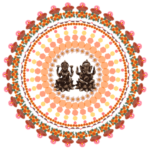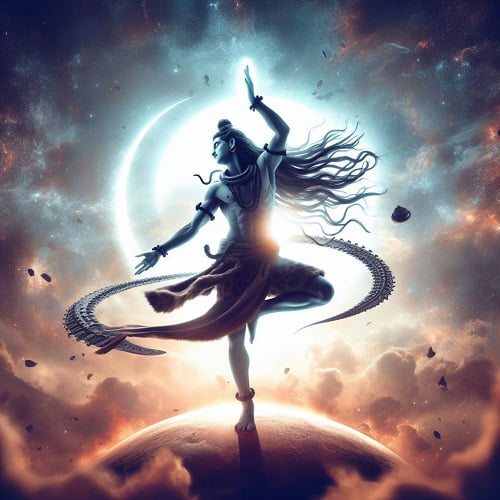Veeranatyam is one of the ancient dance forms of the Southern India. From its name, we can get a brief concept of this dance form. In Veeranatyam, the word ‘Veera’ means ‘brave’, and ‘Natyam’ means ‘dance’. So, it is also known as the ‘Dance of the Brave’. This is mainly a religious dance form that is performed in honor of Veerabhadra, one form of Lord Shiva. The devotion of the dancers towards the god is portrayed through their performance. Each step of Veeranatyam tells the stories of bravery and heroism.
Origin and Performers of Veeranatyam:
Originally, the Veeranatyam began as a religious ritual that took place in the ancient Shiva temples. Mostly, the male followers of Veerabhadra perform the dance form in certain regions of Andhra Pradesh. The regions include East and West Godavari, Kurnool, Anantapur, and Khammam. Men from the Veeramusti community of Andhra Pradesh are the renowned performers of this dance form.
Veerabhadra:

Veerabhadra or veerbhadra is believed to be the fierce form of the Hindu God Shiva. Various Puranas state the story behind the origin of Veerabhadra. Once, Devi Sati’s father Daksha arranged an event to perform ritual sacrifice. He invited all deities except Devi Sati and Lord Shiva. But, due to Sati’s affection towards her parents, she went there alone.
As soon as she arrived there, her father started to insult Sati and Shiva in front of everyone. Unable to bear the insult, Devi Sati attempted self-immolation using her special yogic power. When Lord Shiva heard this, he tore out a piece of his matted hair and threw it on the ground. That piece of hair gave rise to two powerful beings – Veerabhadra and Bhadrakali.
Costumes and Instruments:
During the performance, the dancers wear colorful knee-length dhotis. To keep the dhotis in place, they also use waist sashes. The dancers cover their bodies with the sacred ash (Vibhuti). Additionally, they tied ghungroos, a musical anklet, to their feet.
‘Veeranam’ or ‘War-drum’ is the main musical instrument that is used during the dance performance.
You can also Read Bharatanatyam Dance.
Stages of the Veeranatyam Performance:
Veeranatyam takes place in three distinct stages, each filled with spiritual meaning.
At the initial stage of Veeranatyam, the main attraction is the performance with Veerabhadra Pallem. Here, Veerabhadra Pallem refers to a very large plate that is lit with camphor fair. Carrying it from their palm to their elbows, the performers begin the performance. In this stage, the dance is filled with energy and the rhythm of various percussion instruments. Furthermore, they continue their dance until the fire put out. In addition, the recital of Khadgalu is another special moment of this stage. Here, the priest wields a long sword, symbolizing that of Veerabhadra.
In the next stage, the dancers are seen holding a long pole with bells tied to the top. It has been marked with sacred ash, called Vibhuti. Besides, the pole also represents the Dhwaja Sthamba of the Lord.
The third stage is a highly challenging part of the entire Veeranatym presentation. At this stage, the dancers dance with spears and tridents pierced into their ankles, hands, and even their tongues. With this daring stage, called Narasam, they conclude their performance.
You can also visit other Dances.
Conclusion:
Veeranatym is more than just a dance. It is a living expression of the extreme devotion and bravery of the performers. Additionally, it makes a unique link between art, tradition, and spirituality. Nowadays, the Veeranatyam is performed in various cultural functions and religious processions as well.

